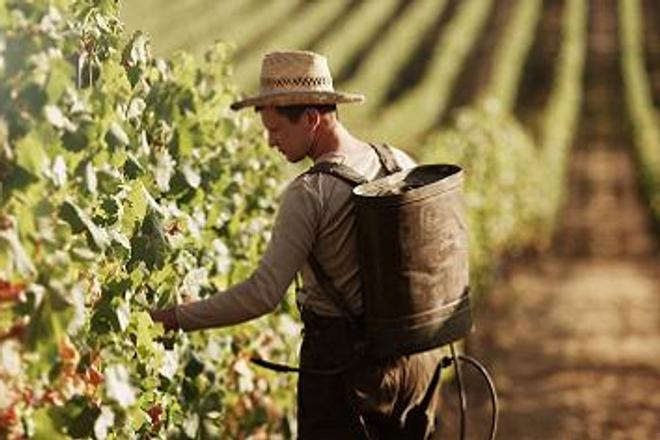A nearly decade long legal tug of war has resulted in a draw as both Slovaks and Hungarians can now label wines as “Tokaj”. The struggle makes sense when one considers the sweet wine’s global reputation. Louis XIV himself once declared Tokaj to be “The king of wines and the wine of kings”.
Slovak Tokaj located in the Lower Zemplín in the southeastern corner of Slovakia is experiencing a golden age. More than two hundred awards from national and international exhibitions in recent years are sufficient proof. With each trophy on the international stage Tokaj “gets more public attention and prestige”, said Michal Bartoš from the Slovak National Collection of Wine, a salon presenting the country’s best wines. Increased awareness results in increased numbers of foreign visitors for the vineyards.
“Foreign clientele often come with a brochure in their hands and seek quality wines they have read about,” said Jaroslav Ostrožovič, owner of family winery
J.&J. Ostrožovič.
The unique taste of Tokaj is created by the region’s subsoil and microclimate. The subsoil is made of volcanic igneous rocks, creating a unique blend of nutrients. The nearby Zemplínske hills create a special climate.
“These conditions guarantee increased production of cibebas and the formation of aromatics in the grapes so typical for this area,” Bartoš said.
Cibebas are grapes contaminated with the noble rot botrytis cinerea. In appropriate conditions the rotting serves to evaporate water from the grapes, and therefore increase sugar content up to 40-60 percent of weight.
“Concentrated aromas translate into wine and gives Tokaj an exclusive flavour,” Bartoš said.
A labelling ranging from three-six putňas is assigned based on the amount of raisins added to wine as it ages. “Putňa contains 23 kilos of raisins added to 136 litre barrels. Therefore six putňas is the maximum possible amount,” said Bartoš.
In order to maintain the quality of the brand, when the grapes are harvested a state supervisor must certify the exclusive Tokaj origin.
“It is prohibited to mix Tokaj wines with wines from other locations,” said sommelier Peter Čechovič. The law regulates alcohol content and maturation time, as well as limiting the yield. “A one hectare yield can’t be over 9,500 kilos,” Čechovič added.
________________________________________
This article was published in the latest edition of Košice Region Guide , which can be obtained from our online shop.
________________________________________
The actual production process draws on family traditions going back several generations. Harvest is “manual, staged and gradual, only ripe cibebas are collected”, said Bartoš. Oxidation is used, rather than the more modern reductive way of making wine. Three varieties of grape are typical for Slovak Tokaj: Furmint, Lipovina and Yellow Muscat. Furmint makes up the majority of Tokaj plantings, mainly due its rich cibebas formation, according to Bartoš.
The easiest way to enjoy this wine micro region is to try out the Tokaj Wine Route. It is possible to prepare the trip individually, or use services of an agency, which plans trips based on specific requests. The standard route offers cultural and historical monuments, wine bars, taverns, hospitality services and artisans. Villages on the route include Čerhov, Veľká Tŕňa, Malá Tŕňa, Černochov, Bara, Viničky and Slovenské Nové Mesto. The most popular option is a two-day stay, consisting of sightseeing and wine tasting. Most of the family wineries offer accommodation and traditional Zemplín or Hungarian food specialities. More active visitors can enjoy golf, bike rental or horseback riding. However, probably the biggest attractions are the tours of the wine cellars. Most are covered in thick black noble rot and are reminiscent of an underground labyrinth.
Rot may not please the eye, but is essential in the wine ageing process, because “it keeps stable humidity so important for wooden barrels and also creates competitive environment for other undesirable microorganisms,” said Čechovič. The most interesting cellars are located in Malá Tŕňa, Veľká Tŕňa and Viničky.
The best time for visits is in September, when the wine is harvested and the area is full of events, festivals and celebrations. The exact timing of the harvest depends on the weather. On Open Tokaj Cellars Day, a special “Tokaj Express” departs from the Košice train station with a network of buses also connecting to all the Tokaj villages for free. Tickets quickly sell out.
“I learned a lot about Slovak culture and tasted the sweetest wines of my life,” said Jackson Simons, a visitor from Boston who took a tour.
When it comes to wine in the Košice region, it is not just about Tokaj but also the Eastern Slovakia Wine Region, which compared to popular regions in the western part of Slovakia is characterised by more stable weather. By sheer size of the vineyards, the region is as large as Tokaj, however they are spread over a much larger area. It consists of four parts named based on bigger cities located close to vineyards. Visitors can explore the wine experience through the Turňa Wine Route (Moldava part) or by visiting in individual wineries in Malý Horeš (Kráľovský Chlmec part), Vinné (Michalovce part), Tibava or Orechová (Sobrance part), and according to sommelier Čechovič: “Orechová offers lovely high quality fruitish wines.” Typical grape varieties are Welschriesling, Cabernet Sauvignon, Red Traminer or Alibernet. Since many of vineries are small family businesses, it is good to notify the owners before a visit.
Visitors looking for a more metropolitan approach can enjoy the Košice Rosé Fest (in early summer) or Košice Wine Festival (in September). Both festivals follow the old traditions of wine cultivation and production in the region, offering libations in the heart of the historical town centre of Košice.
________________________________________
This article was published in the latest edition of Košice Region Guide , which can be obtained from our online shop.
________________________________________



 (source: OneClick)
(source: OneClick)